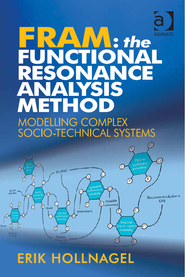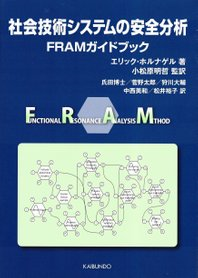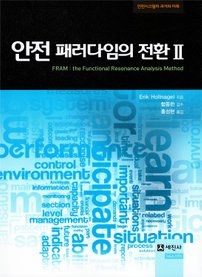FRAM - the FUNCTIONAL RESONANCE ANALYSIS METHOD
for modelling non-trivial socio-technical systems
THE DESIGN, management, and analysis of work tacitly assumes that we know how things are done or should be done. Since humans – and organisations – are supposed to follow procedures, rules, and guidelines, the planning and management of work, including accident investigation and risk assessment, assume that compliance is the norm. The purpose of safety analyses, for instance, is to understand why the outcome of an action or a series of actions (an activity, an operation) was unacceptable (adverse) rather than acceptable (successful) – as in event investigation – or how that could possibly happen in the future – as in risk assessment.
IN REALITY work is never completely regular or orderly, except in very special cases. It is therefore inadvisable to assume that work is as we imagine and that compliance guarantees success. Work-as-done (WAD) will always be different from work-as-imagined (WAI) because it is impossible to know in advance what the actual conditions of work will be, not least what the demands and the resources will be. It is therefore also impossible to provide guidelines or instructions that are detailed enough to be followed ‘mechanically.’ An analysis of how a system functions and of how work activities are carried out must therefore begin by establishing how work is actually done and how everyday performance takes place. It is in particular important to understand how things go right as a prerequisite for understanding what has or could go wrong.
THE REASON why everyday performance nevertheless in most cases goes right is that people – and organisations – know or have learned to adjust what they do to match the actual conditions, resources, and constraints - for instance by trading off efficiency and thoroughness. The adjustments are ubiquitous and generally useful. But the very reasons that make them necessary also means that they will be approximate rather than precise. Approximate adjustments are the reason why things usually go right, but by the same token also the reason why things occasionally go wrong. Things do not generally go wrong because of outright failures, mistakes, or violations. They rather go wrong because the variability of everyday performance aggregates in an unexpected manner. This is captured by the principle functional resonance that is the basis for the FRAM.
THE FRAM is a method to analyse how work activities take place either retrospectively or prospectively. This is done by analysing work activities in order to produce a model or representation of how work is done. This model can then be used for specific types of analysis, whether to determine how something went wrong, to look for possible bottlenecks or hazards, to check the feasibility of proposed solutions or interventions, or simply to understand how an activity (or a service) takes place. The FRAM is a method for modelling non-trivial socio-technical systems. It is NOT a risk assessment method and it is not an accident analysis method. Neither is a FRAM model a flow model, a network model, or a graph. But the model produced by a FRAM analysis can serve as the basis for a risk analysis, an event investigation, or for something entirely different.
The FRAM is based on Four Principles:
- the equivalence of failures and successes,
- the central role of approximate adjustments,
- the reality of emergence,
- and functional resonance as a complement to causality.
FRAM does not imply that events happen in a specific way, or that any predefined components, entities, or relations must be part of the description. Instead it focuses on describing what happens in terms of the functions involved. These are derived from what is necessary to achieve an aim or perform an activity, hence from a description of work-as-done rather than work-as-imagined. But functions are not defined a priori nor necessarily ordered in a predefined way such as hierarchy. Instead they are described individually, and the relations between them are defined by empirically established functional dependencies.
 |
 |
 |